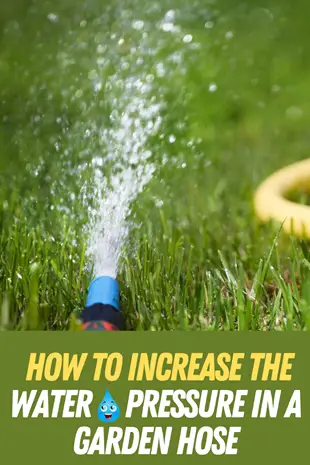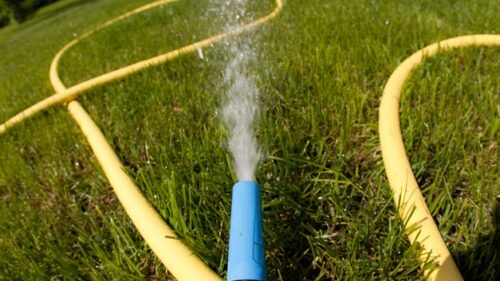If your water pressure is low, here are a few things you can do to increase the water pressure in a garden hose.
So, when it comes to water pipes, two factors apply: pressure and flow.
If you can hold your fingers over the tip of the hose end and stop the water completely,.
That means your water pressure might be too low, and you might have to contact your water utility if you have pressure issues.
They are the only ones who can help alleviate the issue.
However, if you find that you cannot stop or block the water flow in the hose completely, then you just might have a flow problem, not a pressure problem.

how to Increase The Water Pressure in a Garden Hose
Here’s how to increase the water pressure in a garden hose.
To increase water flow in the garden hose, the first thing to do is to eliminate flow restrictions.
This means that you should check for signs of rusty pipes, kinked lines, and smaller sections of pipe, as well as check the water meter size.
Many water meter sizes are actually 5/8″ meters with 3/4” threads. The size can affect the pressure.
It is also ideal to use a large-diameter, less flexible hose and a nozzle at the end of the hose.
However, if all else fails, a booster pump may be required to increase the water pressure in the hose. This will help increase the water pressure in a Garden Hose.
Can a hose diameter affect water pressure?
Water pressure in a hose does not affect its diameter. If there is no water flow, the pressure throughout the length of the hose is the same.
Water hose pressure is the resistance to flow. If a pipe is capped and there is no flow, the pressure in the pipe is the static pressure, and the pipe diameter is of no consequence.
So, if there is a flow in the pipe, there is a pressure drop due to the flow. However, in larger-diameter pipes or hoses, the pressure drops because the viscosity is lower.
Do bends in irrigation pipes reduce pressure?
If your irrigation pipes or garden house have a bend or elbow, it can cause a reduction in the available pressure head at the discharge end of the hose or pipe.
Water running through a straight pipe reduces the available pressure head, which is quite noticeable when using a long, small-diameter pipe.
The amount of water pressure loss depends on the shape of the bend too.
Nevertheless, the tighter the bend in the garden hose, the greater the pressure loss.
Also, this applies to the size of the hose or pipe and the flow rate through it.
Does a long hose reduce water pressure?
Pressure in a longer water hose forces the water to come into contact with more internal surface area.
For example, let’s assume that the longer hose has the same internal diameter and roughly the same flow rate.
This means that a larger surface area causes more friction and more pressure to be lost over its length.
Assuming your tap provides roughly the same pressure at the start of both hoses,.
What will happen is that the longer hose will have less leftover pressure at the starting pressure, minus pressure loss at the end.
So, this means that a longer water hose of the same diameter will have, at its end, lower residual pressure and a lower flow rate.
Related Post: How Long Do Rubber Garden Hoses Last?




